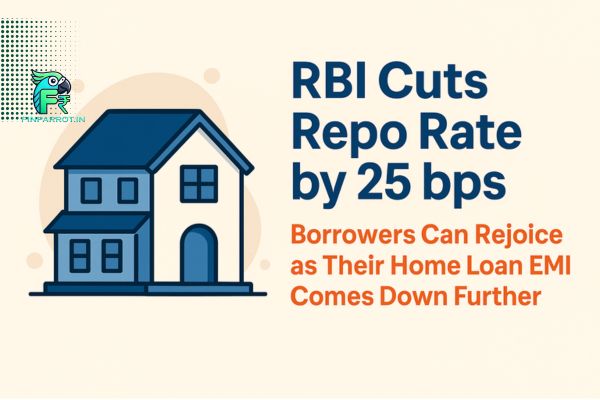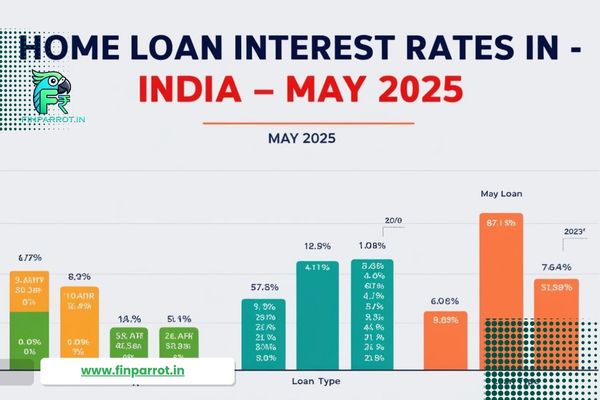📝 Introduction – RBI’s 25 bps Repo Rate Cut
RBI’s recent move to slash the repo rate by 25 basis points (bps) in May 2025 is welcome news for millions of home loan borrowers. As inflation shows signs of cooling, the central bank aims to stimulate economic growth and make credit cheaper. But what does this mean for your home loan EMI? If you’re servicing a floating-rate loan, chances are your monthly payments could dip, providing long-term savings. In this post, we break down what a repo rate cut means, who benefits, how banks respond, and what actions you can take now to maximize this monetary policy shift.
How RBI’s 25 bps Repo Rate Cut Impacts Your Home Loan EMI in 2025
🔍 1. What is the Repo Rate and Why It Matters?
- Definition: The repo rate is the interest rate at which RBI lends money to commercial banks.
- When RBI reduces this rate, banks get funds at a lower cost.
- In turn, banks can offer loans (like home loans) to customers at reduced interest rates.
📉 2. What Does a 25 bps Cut Mean in Practical Terms?
- 25 basis points = 0.25% reduction in rates.
- For a ₹50 lakh home loan with a 20-year tenure, even a 0.25% rate drop can save ₹700–₹1,000 per month.
- Over time, this could translate into ₹1.5–2.5 lakh in total savings.
🧮 3. Example Calculation: EMI Before vs. After
| Parameter | Before Rate Cut | After Rate Cut |
| Loan Amount | ₹1 Cr | ₹1 Cr |
| Interest Rate | 9.00% | 8.75% |
| Tenure | 20 Years | 20 Years |
| EMI | ₹89,885 | ₹87,216 |
| Savings/Month | — | ₹2,669 |
| Total Savings | — | ₹6,40,560 |
🏦 4. How Banks Pass on the Benefit
- Most banks use External Benchmark Lending Rate (EBLR) linked to RBI’s repo rate.
- Within 2–3 months, banks revise floating interest rates for home loans.
- New borrowers benefit immediately; existing ones benefit after a reset cycle (usually every 3 or 6 months).
👥 5. Who Benefits the Most?
- New borrowers: Lower interest rates right from loan disbursal.
- Floating rate borrowers: EMIs drop automatically post reset period.
- Salaried borrowers: With stable income and lower outgo, their affordability improves.
🧠 6. Strategic Actions for Borrowers
- Ask your lender when your loan reset will happen.
- Use an EMI comparison tool to check if switching lenders makes sense.
- If you’re still on MCLR or base rate – consider refinancing to repo-linked loans.
- Evaluate foreclosure or part prepayment to cut interest burden while rates are low.
💡 7. How This Affects the Real Estate Market
- EMI affordability boosts buyer sentiment in urban hubs like Mumbai, Bangalore, Chennai.
- Developers may see a spike in home bookings due to improved eligibility and lower monthly outgo.
- Housing demand in Tier 2/3 cities is likely to see double-digit growth.
⚖️ 8. Limitations & Realities to Keep in Mind
- Rate cuts aren’t always passed fully or immediately by all banks.
- Fixed-rate loans don’t benefit from repo rate cuts.
- Banks may adjust loan tenure instead of EMI, depending on borrower’s agreement.
- Additional processing fees, loan insurance, or switching costs can dilute savings.
🔗 Related Reads:
- Compare Home Loan EMIs with Different Interest Rates
- Why We Dropped a ₹1 Cr Home Loan After Full Analysis
- RBI Home Loan Prepayment & Foreclosure Rules in 2025
✅ Conclusion
RBI’s 25 bps repo rate cut in 2025 is more than a monetary policy move—it’s a real money-saver for home loan borrowers. Whether you’re a new buyer or already servicing a loan, lower interest rates can improve cash flow and affordability. But smart borrowers don’t just wait—they take action. Use this opportunity to refinance, prepay, or plan your next property investment wisely. With the right moves, you can maximize your savings and minimize your financial stress in the long term.









